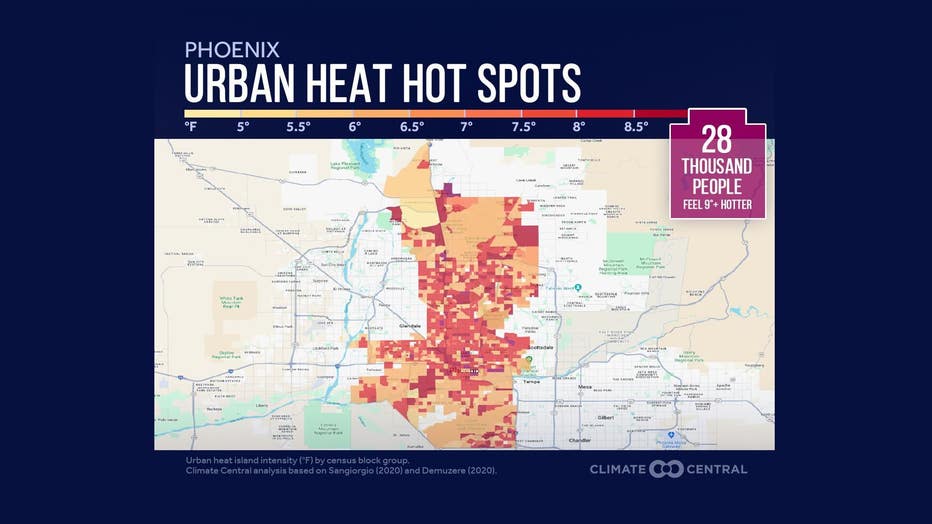Phoenix City Council unanimously approves $60 million shade plan to combat climate change

$60M Shade Plan unanimously passed by City Council
The Phoenix City Council unanimously approved a $60 million "Shade Plan" to plant trees and build structures throughout the city to produce more shade and cool surface temperatures in certain areas. FOX 10's Ashlie Rodriguez has more.
PHOENIX - The city of Phoenix says shade during the hot summer months is a critical resource, and they believe we need more of it.
It's why the Office of Heat Response and Mitigation asked the city council for $60 million to invest in creating more cover from the sun.
The office has been working on this shade plan for months, identifying 36 actions they can take to try to cool down the city naturally.
They made their case to the council as to why taxpayers should pay for this and the plan passed unanimously in the city council by a vote of 8-0.
Phoenix has a fever
Climate experts say depending on where you live the city is getting hotter. All the concrete, roads, buildings and cars are trapping heat and tens of thousands of residents feel temperatures that are about 9-10 degrees hotter than the normal triple-digit summer day.
"You’re only going to continue to find hotter and hotter temperatures and potentially get to the point where it’s unlivable to be in Phoenix," said Shel Winkley, a weather & climate engagement specialist.

It’s why the Office of Heat Response and Mitigation wants to spend $60 million on a shade plan that would include planting 27,000 new trees and building 550 new shade structures over the next five years.
"Nighttime temperatures are increasing at twice the rate as the daytime temperatures. So if we can block some of that sunlight, that helps everyone," said Erinanne M. Saffell, Director of the Arizona State Climate Office.
They found that with the help of shade, what feels like 145° in the sun can be brought down to 115°. Air temperatures of 110° would come down to 108° and surface temperatures of 130° decrease to 110°.
Watch FOX 10 Phoenix live:
The city wants to plant trees in playgrounds, parks, city-owned properties, public right of way spots and private properties with an emphasis on areas that are medium-to-low income.
"This is a good plan to put in place in order to bring down those temperatures in portions of the city that are most impacted by the urban heat island effect," said Winkley.
Areas of Encanto and Camelback East have fewer trees.
As this ECOSTRESS map shows on a hot 106° June day, the surfaces in those neighborhoods registered at least 120°.


Trees can absorb sunlight, blocking heat from getting trapped in the concrete and pavement. They also put water into the atmosphere through a cooling process called transpiration.
Also, through interception, trees will trap rainwater in the ground, not only recharging the aquifers but holding the dust down and improving air quality.
"Where do we all park our cars in the summer? We go under a tree. And that really explains what trees can do for us," said Erinanne M. Saffell, Director, Arizona State Climate Office.

